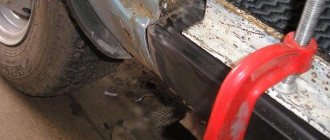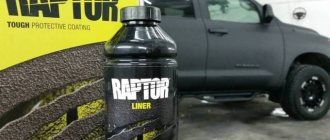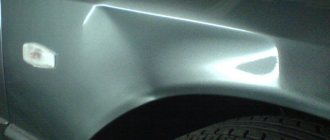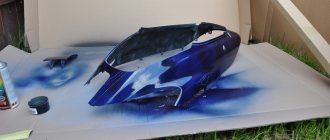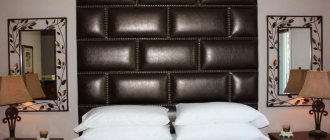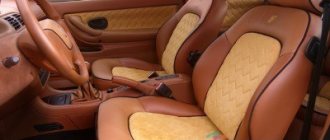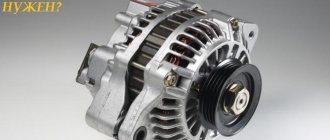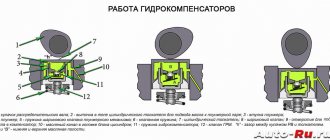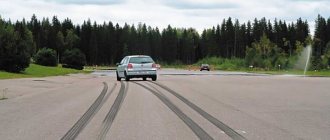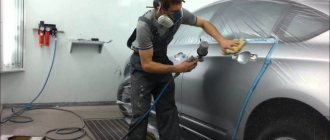Currently, many are trying to distinguish their car from a huge number of cars, using tuning and changing the appearance. Most people like it when the paint on a car body shines, some even try to increase this effect even more.
But the matte color looks quite unique and interesting. It does not shine in the sun, but beautifully emphasizes the shape and design of the body of any car.
The shapes of a car painted in matte color are more clearly defined and have a certain grace. Such cars look much more original than their glossy counterparts. Those who like to stand out and be different from everyone else should definitely pay attention to this method of painting cars.
With the growing popularity of this type of painting, the number of methods for applying the material also increases. The methods by which matte car painting is carried out differ from each other not only in the application process, but also in price. And, as is known, in most cases the result and quality depend on the cost.
Advantages and disadvantages of matte paint
Those who decide to make such a car update will face some pitfalls, since the coating differs from regular paint not only in price. The following claims can be made to such a surface:
- Small scratches on a car's matte varnish are quite difficult to remove, since polishing the body is practically impossible (it will only make the varnish shine more).
- Matte painting of a car opens up additional opportunities to damage the paintwork (any stain or element on the “mat” is more noticeable).
- When updating enamel, such careful selection is required that it becomes an obstacle even for professional services.
- The rough surface of matte paint and varnish easily accumulates fine dust and dirt, so careful care is required for the machine.
Despite such an impressive list, the only advantage of the coating (beautiful appearance) persuades many drivers to choose this particular paint. An alternative is a polymer film with the same effect. Unfortunately, the reasonable price of this material is combined with a pleasant, but not ideal, appearance.
The main stages of matte painting of a car body
Painting a car with a matte color is performed in the following sequence:
- Car washing – all contaminants are removed from its surface, including dust, bitumen stains and grease
- Reinforcement work - all parts are removed from the body, including moldings, bumpers, linings and much more
- Removing Corroded Areas
- Removing old paintwork by abrasive grinding
- Sanding with sandpaper
- Surface primer in 2 layers
- Coloring
- Application of matte varnish
Matte paint technology
The technology of applying a “mat” in the garage does not require special preparation of the car, and you do not need to be a wizard for this. To obtain the desired effect, use matte paint or varnish. The latter can be applied over regular, glossy enamel of any color. The instructions for use are no different from regular varnish or paint, but matte painting of the car is done on the inside and outside of each part. Varnish and paint can be ordinary; in this case, a matting additive is used, the amount of which is calculated according to the manufacturer's instructions.
The basic processes for painting a car matte are no different from the usual preparation for using enamel. The surface is degreased with anti-silicone; if necessary, putty is applied and degreased again. Since we are talking about an expensive coating, you should not save money, but put a base primer and regular primer under the enamel. The base is sanded with P240-320 sandpaper, the layer immediately before the wet paint is P800-1000. You can matte it with Scotch Brite in the gray area; after finishing work, wash, degrease, wipe with antistatic agent.
The painting process is best done with the application of a base. If the coating is two-layer, the matting additive is poured into the varnish; if paint with a matting effect is needed, then the additive is added to the paint. Matting additives are not added to “metallic” - only varnish with the appropriate effect is used. The base is applied in two layers: semi-dry spraying and a wet layer. Painting a car with matte paint takes the same amount of time as regular paint - drying and the formation of the effect lasts 10-15 minutes. After this, you can start applying varnish.
To properly distribute the varnish on a car, up to 4 layers are needed. The first layer is very thick, applied by spraying, the remaining 2-3 layers are thin, sprayed carefully and quickly. Polishing of such a surface is not required, but if inaccuracies are made, you can wipe it with sandpaper from P1500 or a polishing wheel (can be attached to a slow screwdriver) with 74 paste. For work you will need the following tools and materials:
- 4-5 liters of paint and solvent for it (plus 1 liter of solvent for cleaning the spray gun);
- 3-4 kg of soil (entire body);
- 4 kg of varnish;
- Scotch Brite, degreaser, abrasives of varying degrees of grit (P240 – P2500);
- For one liter of enamel and varnish, 700-800 ml of matting additive is required (400-50 ml for a semi-matte effect).
Advantages of matte painting in the Moscow AMC center
High-quality matte car painting has many advantages:
- elegance - matte painting of the car gives it a respectable appearance;
- individuality - the material makes the car original and different from cars of the same brand;
- durability – painting a car in a matte color makes it highly resistant to wear, corrosion and scratches;
- practicality - the material does not require special care, it is less susceptible to contamination compared to conventional paint;
- Aesthetic appeal – painting a car in a matte color will help enhance any shade and improve the appearance of the vehicle.
Alternative to Supplements
There is a matte repair varnish - its effect is not so strong, but as a budget option it is an interesting alternative. Another option to avoid the use of additives in painting is to add a colorless acrylic-based varnish to the black primer (10-20% gives a velvet effect). Ideal matte car painting is achieved using SOFT FEEL kits, but the price for them starts from $850.
Without using additives, you can try to achieve a similar effect by spraying the last layers when using acrylic. Of course, this is not a matte car paint, but the surface created by spraying has noticeably less gloss. In addition, the glossy base can settle to the bottom of the jar when left standing for a long time, which is especially noticeable in cheap materials.
By spraying, you can try to apply not the enamel itself, but the varnish. Painting a car with a “metallic” matte paint coated with varnish will be more effective if you add 10-15% solvent 646 to the varnish. A week or two after painting, the solvent will cause the varnish to become cloudy, reducing its light transmission. As an experiment, you can try using matte enamels for metal surfaces (PF-115) or anti-corrosion paints, combining them with different types of spray paint or varnish.
Car painting defects and their elimination
So, let’s look at the various defects that arise when painting a car body and which are most often encountered on the difficult path of a car painter, even a very experienced one. How to “treat” them and prevent them from appearing in the future.
Dust and debris
The most common defect in paintwork (paint and varnish coating) on a car body is, undoubtedly, debris and dust particles on a freshly painted surface. The reasons and methods of dealing with these defects are described in detail in the article “How to deal with dust and debris when painting a car,” but what to do if, despite all our heroic efforts, debris still sticks to the fresh paint? There is only one way, after waiting for the final hardening of the varnish or enamel, sand off the top layer.
The surface is sanded in two ways: dry with an orbital sander or with water manually. The machine uses Velcro abrasive pads with P1000-2000 grit. Gradually moving from coarse grains to finer ones.
When using the wet method, to eliminate the defect, the sandpaper must be taken with a finer grain of 2000 or higher. Then all painting defects are sanded down. The technology is described in detail in the article “How to properly polish a car.” When sanding a painted part, you should be careful and gentle so as not to rub through to the bottom layer.
Shagreen (orange peel)
The next frequently encountered painting defect is “shagreen” or can also be called “orange peel”. Beginner painters are especially guilty of this. There are several reasons for this defect.
One of the main ones is too thick paint or varnish. Studying the technical manual for the material or paint that you use in your work will help you avoid this painting defect. Freshly applied paint has poor flow and forms a shagreen surface without spreading. Another reason for such a defect may be an incorrectly selected nozzle on the spray gun, as well as air pressure lower than recommended (read the technical manual!).
And don’t try to eradicate shagreen at the roots - it won’t work! Even cars painted at the factory have shagreen, it’s just smaller and less noticeable.
Shagreen is corrected by the same grinding and polishing.
Drips of paint (varnish)
Drips or “snot” when painting - well, what would you do without them? Almost anyone who tries their hand at painting goes through this misunderstanding. Even experienced painters have such incidents. There are many reasons for this painting defect.
I will simply list, separated by commas, the possible causes of this defect: the paint or varnish is too liquid, the intermediate drying between applying the next layer is insufficient, the paint was sprayed from a very close distance, the temperature of the surface being painted is colder than the paint.
It is quite difficult to fix; more often than not you have to wash everything off and repaint it. But if you have patience and the “snot” is not very loose, then you can try to correct this painting defect.
You can read more in the article: “Eliminating drips.”
Cratering (fisheye)
Another unpleasant painting defect, the so-called “fish eye”, is organized in the form of a crater on the very first layer of paint, through which the primer is visible. Small holes are visible on the coating. Sometimes the underlying layer is visible at the bottom of the crater.
The reasons are most often prosaic. Poorly degreased surface (touched with fingers after degreasing, etc.), not treated with anti-silicone, oil splashes from the air duct from the compressor.
This defect usually appears on the first layer of applied pigment (auto enamel, paint), so if you dry it a little longer than usual, then perhaps the fisheye can be filled in with subsequent layers. This method works especially well when painting with metallic paint, when applying the first layer of base (pigment).
In case of fatal “eyes”, from large perches, only complete repainting of the part can save you.
Matte coating
The surface of the paint becomes matte after drying. This type of paint defect does not appear immediately. After painting, you won’t be overjoyed, everything shines, everything seems to be top-notch! Come the next day, and the entire painted surface has become cloudy, as if it had become dull.
Such a painting defect can occur for several reasons. One of the main ones is high air humidity, increased pressure in the system during application, which leads to cooling of the paint (varnish), and, consequently, to condensation of moisture on the surface of the coating. It is also possible that the thinner was used too quickly, causing the surface to cool and causing moisture to condense on the freshly applied coating.
This disgrace can only be cured by deep polishing, possibly together with grinding.
Bubble breakthrough
On the surface of a freshly painted part, after a short drying period, tiny holes appear from burst bubbles, which look like pin pricks.
This painting defect appears due to the incorrect use of a solvent (thinner), for example, too fast for the ambient temperature.
— Very thick layers are applied after a short drying time between layers. — The element heating (drying) was turned on immediately after painting or the drying temperature was too high.
Only grinding followed by polishing will help to partially eliminate this defect.
Pollination on a freshly painted surface
Another common defect is paint spatter on a freshly painted surface. This kind of incident occurs when a new portion of paint accidentally falls onto an already slightly dried surface. And when it dries, it becomes rough-matte (like sand).
Due to adhering particles of dry paint, the surface has a rough sandy texture to the touch. It is also possible that the paint (varnish) is too viscous due to a lack of thinner, or the speed of the paint gun is too fast. Perhaps the distance from the gun to the surface to be painted is too large or there is too much pressure at the spray gun outlet.
It can only be treated by grinding and polishing.
Unpainted surface (unevenly painted)
And one of the simplest, but at the same time the most unpleasant defect is an insufficiently painted surface. Or, as painters call it, “non-painters.”
When, after drying, the soil clearly shows through, or the applied layers of paint (pigment) look like a zebra or clouds. The underlying layer is visible through the finishing coating. Typically, unpainting occurs on difficult-to-paint surfaces, corners and edges, as well as along the bottom of the car. You can only protect yourself with the correct technique of applying layers, with an overlap of one third, as well as good lighting in order to see what you are doing.
This defect can only be corrected by repainting.
Risks under varnish
This defect often manifests itself in inexperienced car painters who do not sufficiently control the size of the abrasive, which they use, for example, to sand off the primer on parts before painting. Sometimes, in an effort to quickly remove soil or old paint, they use abrasive sandpaper with large grains, the risks from which cannot be filled in with paint and varnish in the future. It is also possible that the preparation was simply not careful; the painter could simply not have paid attention to the fact that he did not rub down large risks with a finer abrasive. And, of course, in this case, when the paintwork dries, their outlines begin to appear.
This defect can only be treated by sanding and polishing, provided that the marks are not very deep and the varnish has been poured quite well (there is something to grind off).
Midge and how to get rid of it
Another unpleasant defect often occurs when painting in a garage in the summer - these are sneaky midges and other insects that flock to the smell of paint and with all their feet simply plunge into the freshly painted surface, getting stuck in the varnish and sometimes even trying to make a furrow in it, looking for a way out. freedom.
There is only one fight against this evil; you should always have a long sewing needle ready, with which you can carefully pick up the sneaky insect and pull it out of the varnish that has not yet hardened.
In the future, it can only be treated by grinding and polishing.
In this article, we looked at the most common painting defects among novice painters. These are the main, but of course, not all the problems that a painter faces when painting a car. Basically, all defects, if not too serious, are corrected by grinding and polishing with an abrasive paste, and only neglected options can be cured only by repainting.
And remember, the client pays for the painting, and the painter pays for the repainting!
If during your first attempts at painting a car you find the above defects, do not worry too much and do not despair. Almost all painters go through this, and this article will help you avoid such problems in the future.
What to pay attention to
Coverage selection criteria:
- product rating;
- quality of materials used;
- ease of use;
- storage time;
- color accuracy;
- coating durability;
- compatibility with other means;
- drying speed;
- optimal application and drying temperatures;
- viscosity;
- overlapping ability;
- what is the price;
- palette of shades.
You should pay attention to the description and functionality of car enamels in order to avoid mistakes when choosing and not to be disappointed in the result. You also need to make sure in what proportions and how to mix the paint and how to dilute it.
Concept, types and advantages
ATTENTION! A completely simple way to reduce fuel consumption has been found! Don't believe me? An auto mechanic with 15 years of experience also didn’t believe it until he tried it. And now he saves 35,000 rubles a year on gasoline! Read more"
On the one hand, matte painting is one of the ways to emphasize the individuality of your car and is considered one of the most expensive, but on the other hand, it is a risky option, since all defects are more visible on a matte surface, and it is almost impossible to eliminate scratches, because polishing on such a surface not allowed.
The main types of giving a car a matte surface:
- Use of matte varnish;
- Painting with paint along with matte varnish;
- Covering the car with matte film;
- Application with liquid rubber.
In this article we will still consider the first two options. At the same time, we will look at the question of how to paint a car with your own hands.
Rating of the best car enamels of 2020
Acrylic car enamel LADA MOTiP
The coating from the MOTIP trademark opens the rating of quality products. The average price for paint is 417 rubles. The developers created auto enamel for cars of Russian origin (Lada, GAZ, Chevrolet Niva, etc.) according to the original shades used at machine-building enterprises. The acrylic product is endowed with high-quality covering ability, adhesion to the surface and wear resistance. The creators guarantee uniform coverage and economical consumption. The products are purchased for repair painting of car bodies, tinting bumpers, calipers and discs, and other metal surfaces.
A well-known brand of quality, innovative, easy-to-use products, it offers a wide variety of high-tech coatings aimed at the modern consumer. The brand uses environmentally friendly components, which is playing an increasingly important role in the modern world.
| Options | Characteristics |
| Manufacturer | MOTIP DUPLI GROUP |
| A country | Holland/Germany |
| Application temperature | from 15 to 25°C |
| Spray distance | 25-30 cm |
| Drying time | 20-30 min. |
| Complete drying | in 24 hours |
| Additional properties | quick-drying automotive coating in an aerosol can |
| Components | based on acrylic resins |
| Approximate consumption | 1 cylinder per 1.25-1.75 m² |
Acrylic car enamel LADA MOTiP
Advantages:
- UV resistance;
- large selection of shades;
- environmental friendliness of products.
Flaws:
- price.
Car spray paint Mobihel
The average cost of popular models of the product is 228 rubles.
The inexpensive product contains car enamel, HELIOS solvent, as well as ingredients that increase the resistance of the paintwork to physical damage and abrasion, gloss and weather resistance. The products are used for car body repairs, for the reconstruction of buses, for watercraft and other types of transport. The aerosol is also suitable for car painting on any metal-based surfaces. Compatible with most types of varnishes, with the exception of nitro-based varnishes. Automotive chemicals are suitable for painting hard metal, wood, ceramic, stone, plastic and other elements.
The high popularity of brand coatings is determined by the volume filling of the Russian market with Mobihel products at an affordable price. In numerous positive reviews, buyers who carry out painting work at a professional level note the high quality of the products. A wide variety of paints, toners and primers makes it possible to choose the best option. Thus, for covering chips or similar small restorations of paint surfaces, aerosol cans or auto enamel pencils are ideal. The coating spreads well and dries quickly, and the shade matches the marked marking. It is worth taking into account when working with metallic materials, the color at the joints will be brighter than when using standard shades.
| Options | Characteristics |
| Manufacturer | Mobihel |
| A country | Slovenia |
| Application temperature | not lower than +10 degrees |
| Spray distance | 30-40 cm |
| Drying time | 20-30 min |
Car spray paint Mobihel
Advantages:
- a wide range of;
- correct rendering of shades;
- budget cost;
- coating stability.
Flaws:
- not compatible with nitro-based products.
Auto enamel Kudo KU-4028 spray
The average cost of production is 130 rubles.
Air-drying alkyd enamel produced in Russia is used for repairing car bodies and components. The product is endowed with high-quality covering ability. Car cosmetics are endowed with the following functionality: shine, light fastness, weather resistance, adhesion to the surface for painting, resistance to physical impact and wear. The popularity of the company's budget models is due to the large selection, average cost, as well as the use of modern technologies in the manufacture of products. Aerosol cans are filled with alkyd and acrylic paints (in matte and glossy versions). The brand has products for restoration, painting of engines, wheels or removing imperfections on the body.
| Options | Characteristics |
| Manufacturer | KUDO |
| Base | alkyd |
| Drying period of the covered area | 5 hours |
| Consumption | ~ 2 m |
| Compound | modified alkyd resin, pigments, fillers, functional additives, xylene, methyl acetate, butanol, propane, butane |
| A country | Russia |
| Spray distance | 25–30 cm |
| Application surface | metal, painted surface |
Auto enamel Kudo KU-4028 spray
Advantages:
- affordable price;
- high quality;
- a large assortment;
- use of modern technologies in production.
Flaws:
- No.
Auto enamel Sadolin 012 alkyd
Synthetic coloring products priced at RUB 409. from the company Sadolin is an air drying product based on a specially manufactured alkyd resin, developed for car painting. Auto enamel is distinguished by a long-lasting shine, high wear resistance of the coating with weather resistance function. She is also not exposed to physical influence. The product fills, smooths out minor unevenness, and also adheres well to the surface. Reaction drying of the coating is carried out at temperatures up to +80 °C.
Automotive paint has a balanced composition, this is facilitated by the ratio of melamine and acrylic components. The product can be easily applied to all surfaces and the hardening process takes place quickly, guaranteeing a high-quality protective coating.
| Options | Characteristics |
| Manufacturer | SADOLIN |
| A country | Finland |
| ductility | 70-120 s/DIN 4/20s |
| Dry ingredients included | 54-64 wt%, depends on shade |
| Thinner for pneumatic application | There is |
| Flexibility when applied | 18 - 20 s/DIN 4/20°С |
| Drying process: dust free | 2 hours/20°C |
| Unstuck: | 6 h/20°C |
| when completely hardened | 24 h/20°C |
| hardening 1 hour | temperature 70°C |
| hardening 45 min | temperature 80°C |
| Drying with hardener From dust | 30 min/20°С |
| unstuck | 4 h/20°C |
| complete drying | 7 h/20°C |
| Dried film width | 35 - 43 microns |
| Shine | At least 90 at an angle of 60° or 65 at an angle of 45° |
Auto enamel Sadolin 012 alkyd
Advantages:
- applies to any plane;
- according to buyers, the product has rapid hardening;
- resistance to damage.
Flaws:
- price.
ARP metallic car paint in a can
The approximate price of the product is 178 rubles. The bottle contains basic metallic car paint from ARP. The product contains 3 ingredients: pigment, thinner and gas. At the same time, the gas in the composition is presented in two physical states (in the form of liquid and gas). The composition ensures the most efficient functioning of the cylinder.
| Options | Characteristics |
| Manufacturer | ARP |
| Paint effect | Metallic |
| Base | Acrylic resin |
| Application temperature | 20 °C |
| Spray distance | 20-30 cm |
| Touch dry time | 10-20 min. (20 °C) |
| Complete drying | 1-1.5 h (20 °C) |
| Package | Aerosol |
ARP metallic car paint in a can
Advantages:
- low cost;
- three-component composition.
Flaws:
- long drying.
Auto enamel Vika ML-1110
The average cost of the product is 359 rubles.
A high-temperature drying agent is used when painting a pre-primed and putty car body. Car cosmetics are a mixture of dyes containing alkyd and melamine-formaldehyde resins and organic solvents with special additives. Painting is carried out on a previously prepared, phosphated and primed metal surface of the body and other car parts.
To reduce viscosity, car enamel is thinned with R-197. When painting in an electric field, the paint is easily diluted with RE-1V or RE-2V chemicals. Products used in retail sales are diluted with N647, 648, 650. The hardening period during hot drying (130 °C) is 30 minutes. After drying, the coating becomes smooth, continuous, without delamination, pockmarks or side inclusions. Minor shagreen on the painted surface is acceptable.
In a short period of time, the Russian manufacturer of car cosmetics has taken a place in the car paint market, offering high-quality products at a budget price. The product is sold both in cans and in convenient aerosol packaging. Alkyd and acrylic paints, as well as metallic car enamels, are offered for sale. The tint arsenal of the coating includes more than 215 colors, providing customers with ready-made auto enamel of the required shade.
| Options | Characteristics |
| Manufacturer | Vika |
| A country | Russia |
| Optimal processing temperature | +20°С |
| Drying time at temperature (132±2)°С | 30 min |
| Coating thickness | 35 – 40 microns in two layers |
| Compound | Vika-syntal enamel |
| Minimum temperature | +15°С |
Auto enamel Vika ML-1110
Advantages:
- price-quality ratio;
- extensive color palette.
Flaws:
- viscous composition, must be diluted.
Auto enamel Duxone DX600 base
The average cost of coverage is 1200 rubles.
Enamel is a two-component product based on acrylic copolymer from some of the best manufacturers of paint products. It is used for coating cars, trucks, and buses with non-metallic materials. The brand's auto chemical products occupy one of the leading positions in the paint and varnish market. The coloring composition is mixed with the hardener, activating the polymerization of epoxy resins. Can be stored for a very long time before mixing. Auto enamel is easy to use and does not require expensive painting equipment for application. For high-quality application of paint on a vehicle, it is necessary to pre-treat the surface with putty and primer.
| Options | Characteristics |
| Manufacturer | Duxone |
| Type of auto enamel | basic |
| A country | Belgium |
Auto enamel Duxone DX600 base
Advantages:
- high quality components;
- ease of use;
- long storage;
- the dried surface is easily polished.
Flaws:
- expensive remedy.
Basic enamel Reoflex
The average price of coverage is 950 rubles.
Russian-made base enamel is used to obtain an effective coating for metal and plastic parts of vehicles. The product guarantees high-quality covering ability, is distinguished by convenient application and a short drying period after application. The coatings are presented in a ready-made range of shades of base enamels designed for domestic and imported cars.
| Options | Characteristics |
| Manufacturer | Reoflex |
| A country | Russia |
| Optimal processing temperature | from +15 °C to +30 °C |
| Drying time | 15-20 min. |
Basic enamel Reoflex
Advantages:
- convenient use;
- quick drying;
- good covering ability.
Flaws:
- high price.
ABRO MASTERS spray paint
The product costs an average of 167 rubles. used for painting elements made of metal and wood, various parts and bodies of vehicles. The paint is suitable for cars and trucks, buses, motorcycles, scooters. Car cosmetics are applicable for all facing and interior painting repairs that happen. The dried products do not contain elements harmful to health and are representative of some of the best products on the market.
| Options | Characteristics |
| Manufacturer | ABRO |
| A country | China |
| Application temperature | 21°C |
| Spray distance | 25 to 30 cm |
| Materials included | propane, butane, acrylic polymer emulsion, water, pigments, stabilizers, toluene, acetone |
| Approximate consumption | 1 cylinder per 1–2 sq. m. |
ABRO MASTERS spray paint
Advantages:
- budget cost;
- suitable for all vehicles;
- for painting car components and cladding.
Flaws:
- No.
Chip paint in a bottle with a brush from KIA
The average cost of paint is 300 rubles.
A Russian-made product for chips that eliminates damage and scratches to the surfaces of cars covered with paint. Using the products, you can carry out spot repairs without changing the color in large areas or the entire vehicle part. By using car repair cosmetics with a brush, car enthusiasts will save money and return the car to an appearance identical to new.
It is recommended to buy a package of paint and varnish, which will give the surface the desired shade and shine and serve as a protective layer. Before use, the paint package must be thoroughly shaken to ensure uniform mixing of the product in the bottle. Then the product is applied to a degreased surface, free of dust and rust, using a brush in the cap of the bottle. To paint over a small chip, car enthusiasts use a regular toothpick.
| Options | Characteristics |
| Manufacturer | Color1 |
| A country | Russia |
| Drying temperature | 20 C |
| Drying time | 10-15 min. |
Chip paint in a bottle with a brush from KIA
Advantages:
- use at sub-zero temperatures;
- Customer reviews report that the paint shade matches the color of the car;
- saving money.
Flaws:
- Suitable for small plane.
Painting a car matte color - pros and cons
I would like to get down to business as soon as possible, but before that you need to consider:
- such a coating accumulates dirt very quickly, since it has a rough surface, so car care must be appropriate;
- scratches and chips are more noticeable on it;
- in case of surface damage, repair work will require additional costs and effort - expensive, as a rule.
If you are ready to put up with all this, then you have one undeniable advantage - your car will look just great and chic, the envy of all your neighbors after applying this varnish.
Color defines style
Black
— The matte black car paint looks great on large cars and premium class foreign cars. But choosing the right angle for the photo will be difficult.
Red
— For those who want to stand out from the flow of traffic in the urban environment, with red without glitter - this will succeed.
Blue
— Looks great in combination with chrome elements.
Grey
— One of the most common, characterized by practicality of care. Gray color without metallic gloss will be lost in the city traffic.
White
- It looks great. Simple, royal.
If painting a car completely with matte paint is not right for you, there are options for combining paint with gloss, for example, the roof, hood - other elements without gloss.
